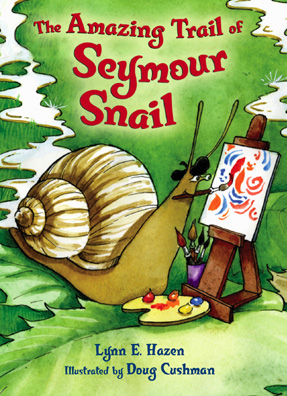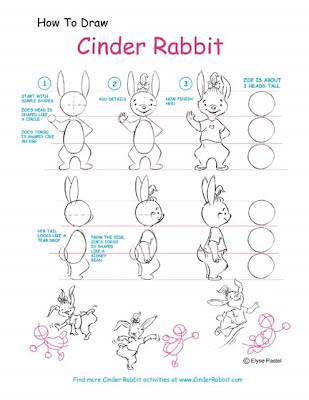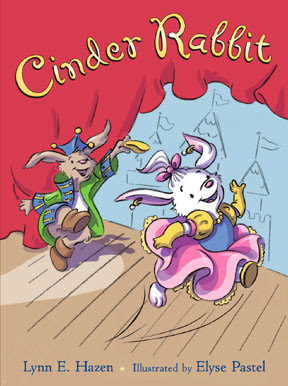Hello Imaginary Readers!
We are in for a treat. Today we are interviewing Bethany Hegedus & Kekla Magoon, YA novelists and co-editors of the literary magazine Hunger Mountain's Children and YA section. (Bethany left, Kekla right)Lynn: Hi Bethany and Kekla. Please tell me a little about Hunger Mountain and how you got involved.
(Bethany left, Kekla right)Lynn: Hi Bethany and Kekla. Please tell me a little about Hunger Mountain and how you got involved.
BH:
Hunger Mountain is the well-established and respected literary journal that is affiliated with Vermont College of the Fine Arts. Recently, the decision was made to bring Hunger Mountain online and with it to add a Children’s and YA section to the journal. Miciah Bay Gault, Managing Editor of HM invited alumni to send in a resume or CV for the editor position. I responded quickly but knew the job would be large and that if I took it on I would want to partner with someone. Kekla and I have been doing joint school visit presentations and we have a good working relationship balancing each other’s strengths and weaknesses (in this case two minds and four eyes are better than one!). We each sent in our materials, expressing a desire to work together and the HM board met and went over all the applicants and surprise, surprise selected us! We were thrilled and excited and are now glassy-eyed. Or at least I am!
KM:
I’m excited, too! Like Bethany I was intrigued by the position announcement, but worried about the volume of work it would be for just one person. Our partnership enables us to share tasks, problem-solve jointly, and generate more and better ideas. I knew I wanted to be involved in the new children’s and YA section because I realized it could be a fresh and unique resource for the children’s writing community. Writing and editing are such solitary activities, and it’s easy to become isolated, so another part of the appeal of working on HM is the opportunity for me to engage with a larger community of writers. So far it has been a neat process.
Lynn: As editors, what kinds of content are you looking for? BH:
Content! The meat of the magazine! What we are doing is something new in literary journals and for our field, and we are excited about this. The intended audience for the Children’s and YA portion of Hunger Mountain is adults and not children. It is lovers of our craft, industry professionals, working authors and illustrators as well as teachers, librarians, and anyone who admires the work that those in the children’s field produce.
Since our content is aimed at adults and not children, children’s writers are encouraged to be experimental; find a place for their “odder” and “edgier” work. However, it isn’t all about being “odd” or “edgy.” Those in the kid lit community know and respect craftsmanship both inside and outside the box.
Basically, for me, I want to publish work by up-and-comers, as well as established writers who take creative risks, create and demonstrate the range of adolescent emotion from PB age to YA. Also we will be publishing a number of craft-related essays and industry interviews and we see HM as adding to the content and scholarship that is published by Horn Book, SLJ and other journals that cover children’s literature. However, the fact that we publish fiction and creative-non fiction, not reviews, sets us apart.
KM:
Our vision for HM is to be a point of information and connection for YA and children’s writers online. As editors, we hope to create a space where writers can experiment, share ideas, and be inspired. We will publish short fiction, including novel excerpts, poetry, and short non-fiction pieces. Even though the journal’s audience is adults, the fiction that we publish will still be of a style and quality that would appeal to children and teens. Like Bethany said, this places us in a rather unique position, where authors can test out their material on a knowledgeable adult audience. As a writer, the opportunity to submit short fiction to HM would appeal to me because, as it stands, there are a limited number of places where short fiction for children and teens can be submitted. We are open to an unlimited variety of material and subject matter for new fiction, poetry and creative non-fiction, as long as it represents your best work. In addition to highly-polished new pieces, we’d love to see deleted scenes from published books, the short story that launched a novel, or samples from a picture book artist’s sketchbook.
On the article side of our publication, we’re also launching something unique. We’ll seek personal essays, objective/journalistic articles and opinion articles. We’ll include pieces on basic craft issues, the writing life, and children’s publishing, but we’ll also explore opposing points-of-view on industry trends and even controversial topics related to writing. As a reader, the journal would appeal to me because it fills a need for a public space in which to explore these craft and industry issues. Many writing advice and craft books exist that deal with these issues, but it can be hard to engage other people in conversation about hard-copy writings. There are also many blogs and websites out there for YA and children’s writers that promote discussion, but blogs are a more informal medium than what we are trying to create. HM will offer published articles and fiction PLUS the opportunity for reader feedback and discussion, which will enable us to spark dynamic conversations about hot-button issues and trends in our field.
Lynn: What's the payment for selected work? And what rights are you buying?BH:
HM believes in paying authors and illustrators for their work. Our payment range varies between $25-75 and often well-known contributors volunteer their pieces. The major payment is in contributing to the literary community and being affiliated with such a quality journal. We buy first time world wide serial rights only; and upon publication rights revert back to the author.
Soon the submissions will be open to all. HM will be using an online submission manager, so fiction, poetry, and creative nonfiction can be sent in online.
Lynn: I hear Hunger Mountain is also launching the Katherine Paterson Writing contest. Can you tell us a little more about that?BH:
Newbery winner Katherine Paterson has long been affiliated with VCFA and sits on the board of the institution but in her own words she is not a teacher. Which may be true; she isn’t on faculty but teach and inspire she does with her novels and characters from Gilly Hopkins to Rosa, from
Bread and Roses.
As a local Vermonter, when HM was looking to create the contest and give it a name, the
Bridge to Terabithia author was the first that came to mind. Katherine Paterson kindly agreed and now we have The Katherine Paterson Prize. Ask me, it has as nice a ring to it as Pulitzer!
Here is the official announcement and contest rules.Lynn: I know you both have new novels. Please tell us about your books. 
BH:
In my debut novel,
Between Us Baxters (WestSide Books/09) Polly Baxter has always been friends with Timbre Ann Biggs. It may matter to everyone else that their skins are different colors, but they don’t mind being the only “salt and pepper” friends in town. Or at least Polly doesn’t. Raised firmly with her mother’s belief that “you can’t pick your family but you can pick your friends” Polly clings to her friendship with Timbre Ann. After all, it is Timbre Ann who quizzes her on her vocabulary words and whose hand-me-downs she wears. It is also Timbre Ann who Polly begins to keep secrets from, including her daddy’s drinking. However, Timbre Ann has a way of knowing things about the Baxter’s, even when it isn’t Polly who shares them with her. When black-owned businesses begin to burn to the ground, Polly struggles to cope with the implications that her family may be involved and to understand the true meaning of friendship.

KM:
My novel,
The Rock and the River, is set in 1968 Chicago. The civil rights movement is in full swing. Sam Childs (age 13) has been raised in the movement, as his father is a well known civil rights activist in their community. But Sam’s older brother, Stick, grows frustrated with the slow pace of change, as many young people did at that time. When Dr. King is killed, Stick leaves home and joins the Black Panther Party. Sam finds himself torn between the ideals of his father and his brother. He wants to believe in his father, to believe that non-violent protest will lead to the change he desires – but it gets harder for Sam to stand by as his community is being ravaged by police brutality and poverty. He begins to explore the Panthers with Stick, though he still struggles to decide what is right. Will Sam follow his father or his brother? His mind or his heart? The rock or the river?
Lynn: How do you juggle your time creating new work, promoting your published work and now editing your section of Hunger Mountain?BH:
I just try to focus on the work at hand: whether that may be an upcoming school visit, a novel deadline, a check-in call with my agent, work with Kekla on Hunger Mountain, a revision of a picture book or working on my website or other promotional materials. I tend to rely on instinct in terms of my daily priorities. Somehow, some way it all gets done! (My laundry, now that’s another thing!) And, my writer’s group keeps me honest and keeps me producing new work weekly. That is key!
KM:
It’s a very big struggle for me to prioritize. Lately I’ve been using a series of to-do lists to help me organize my activities. I write the tasks right into my calendar each week. My writers’ group sits down every January to outline goals for the year, which I find really useful in targeting my long-term goals. On my own, I then break down the goals by month, and each month I break them down by week. This is not to say it that it all gets done! But it has helped me understand my work pace and process better, when I can look back and compare my intentions vs. my accomplishments. It has helped me understand what I can realistically accomplish in a day/week/month, which in turn has helped me stop putting pressure on myself to accomplish too much in too short a time. I’ve become better at saying NO to outside activities that will draw me away from my writing and professional goals. The hardest thing for me lately is to focus on producing new writing, since book promotion and editing are new and exciting adventures for me. But my writers’ groups definitely help me keep on task with my latest draft!
Lynn: Do you do school visits, too?KM:
Yes! We each do school visits on our own book, but we also developed a joint presentation. It’s another area of our partnership that works really well. Since our books are set in 1959 and 1968, we are uniquely positioned to provide students with an in-depth presentation about the beginning and end of the civil rights era.

Our presentation is called
“The Movement: Civil Rights in America 1959-1968.” It’s subtitled: “Two Books. Two Authors. One Powerful Presentation.” We lay out a timeline of civil rights movement, beginning with Bethany’s Between Us Baxters, which occurs at a time when segregation was still in effect in the South. She discusses Jim Crow laws, Brown vs. Board of Education, the Klan and the Citizen’s Councils, and the kinds of events that occurred that ultimately drove the black community to organize and launch the civil rights movement. Using a photo montage, we fast-forward through the parts of the movement that students more typically study in school, until we reach 1968 and the assassination of Dr. King. I talk about the effect that Dr. King’s death had on black communities around the country, and the new militancy and community organizing efforts that rose up in the wake of his murder. It’s a topic students don’t normally get to study, but is an area that needs more attention if we ever hope to understand the civil rights era as it truly happened.

Our presentation is fun and interactive, using audience participation and readers’ theater to engage students in the material. There’s a lot about our books that make them complement each other. Together, we cover the gamut of civil rights issues: Polly’s a white working class girl in a Southern rural setting, early in the movement. Sam’s a black middle class boy in a Northern, urban setting, late in the movement. The divergent perspectives and settings give us a means to examine the civil rights era from two fresh angles. We provide teachers’ guides and classroom material as a follow-up to our presentation.
We also both do interactive writing workshops for smaller groups.
BH:
It is wonderful to partner with Kekla on the school visits, as well. We brainstorm, work on promotional materials, rehearse with one another and keep each other laughing throughout the process of whatever is thrown our way.
Lynn: Do you have any tips for authors in the time management juggle?BH:
Give up television! I am serious! I no longer have a TV! But I do catch episodes of my faves online (gotta see Lost and Damages!) but truly cutting back on the television has given me a lot more time than I once did. Now instead of watching American Idol I just hop over to facebook and follow editor Elizabeth Law’s witty banter and takes on the performances. I am caught up in five minutes.
KM:
Ha. Bethany’s quite right. But I love my TV, so that solution doesn’t entirely work for me. (Though, I will say that having DVR makes a big difference…) My suggestion is to include your writing activities in your calendar or schedule in advance, as if they are fixed events, with a date and time attached. Lately I have been managing my time this way, especially since I work from home full-time, which to the outside world often reads as if I’m not working. People have no qualms about calling me to do things in the middle of the day, as if I don’t have anything better to do. I find it easier to say no when I can open my calendar, see my writing plans, and decide if the other activity is actually more important to me.
Lynn: Since this is an imaginary blog, can you please tell us in what ways your writing and now editing career is different than you originally imagined?BH:
Hmmm…I originally imagined writing someday would cease to be work, and I mean work with a capital W. It continues to be and though I wish the process was easier some days; and that the brick walls didn’t always appear when I least expect them (or even when I do expect them); but I have come to like the brick walls. I do my best to breathe deep and craft-wise dismantle the walls knowing it will take time, energy and careful thought (and emptying the mind, too!) In my own emotional life, my brick walls didn’t get as high as they were overnight and they didn’t come down overnight either. And I know this is the same for my characters. I have to show their emotional brick walls being built brick-by-brick and then see how they break through them or live inside them. Either way it takes time and plenty of patience.
Enough with the bricks before you throw them at me! Editing, on the other hand, is new to me although critiquing is not. Studying for my MFA at VCFA we were trained in providing valuable feedback to fellow authors. I rely heavily on that training and also the work I have done in my writer’s group over the last ten years. And, I trust Kekla! We think differently; and have different opinions and the discourse between us is invaluable.
KM:
Well, depending on how far I look back, the fact that I’m a writer/editor at all is something different from what I imagined my life would be like. As a child/teen I imagined myself as a doctor or teacher – all my varying career interests were much more “traditional” than the creative life I’ve patched together for myself in reality. Even looking back just to the time I started writing seriously, which was about eight years ago, I couldn’t have imagined myself making a full-time living this way. My previous professional jobs were very disappointing to me, and I quickly came to believe that any job I ever had would be messy and stressful and painful. As my writing life has evolved, I’ve learned that it doesn’t have to be that way. Although writing bears its own messes and stresses and pains, that energy now feeds my work instead of detracting from it. I feel lucky these days to be doing something I love.
Lynn: Thank you Bethany and Kekla. Congratulations on your novels and best of luck on your new venture as co-editors of Hunger Mountain's children's and YA section.Imaginary Readers, you can find out more about Bethany Hegedus and Kekla Magoon by visiting their websites:www.keklamagoon.comwww.bethanyhegedus.com






















































